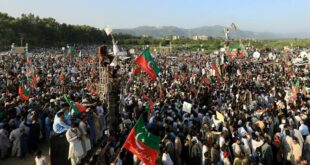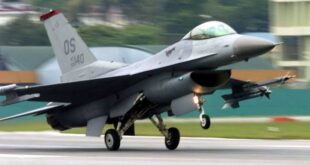
A path-breaking Roundtable Conference, regarding 75th anniversary of cordial and warm partnership between Pakistan and United States was held to highlight the “support and assistance in the infrastructure sector” in Islamabad, in which the excessive progress in the very key sector was convincingly presented.
The United States Agency for International Development (USAID) has been assisting the government of Pakistan for the last 61 years, building the infrastructure needed to improve the economic enabling environment, increasing community resilience and expand education and health services largely.
Mr. Philippe Accilien, Director Office of Infrastructure and Engineering at USAID, while expressing his views mentioned that the delicate journey of the friendly relations between the two countries started 75 years ago, and became stronger with every passing day, cooperating and backing to the Pakistani nation in different sectors, including infrastructure and development.
“We have been working broadly in the infrastructure sector as we realize it is highly inevitable to Pakistan,” he said, adding that whether it was devastating earthquake in 2005 or shattering 2010 floods, US government stood shoulder to shoulder with government and people of Pakistan in every difficult moment.
He further stated that USAID in the cooperation with federal and provincial governments of Pakistan, worked for the better quality of life in big cities in the country, as water, sanitation and waste-management have been the major issues in these cities.
Mr. Jalil ur Rehman elaborate the Pak-US collaboration for the betterment of the life of Pakistani people, after the havoc of 2005 earthquake. He flashbacked on how US government through USAID in Pakistan, carried out tremendous efforts in rescue operations and various reconstruction/rehabilitation programs after the devastating earthquake.
“US contributed more than $300 million, due to which 60 schools were constructed in Bagh and Mansehra, where student enrolment was more than 30,000; one tehsil level hospital was erected at Dhirkot Bagh in Azad Kashmir.” He mentioned.
He said that USAID has a strong infrastructure program in tribal districts, under which more than 600km of roads and 35 bridges in Khyber Pakhtunkhwa and Balochistan, including two tunnels in the Pakistan border region have been constructed and three trade routes between Pakistan and Afghanistan, including Peshawar-Torkham road, Bannu-Ghulam Khan Road and DI Khan-Anghoor Ada Road. He said the new roads enhanced commerce and the tollways will generate revenues to maintain them. Besides these important roads, two grid stations and some power transmission lines were also upgraded. The construction of two irrigation tube wells and the water supply of two tube wells benefitted at least two million population in the area. Some of the infrastructural projects are still in progress and are expected to be completed in a couple of years.
Mr. Shahid Mahmood, throwing light on essential infrastructural programs in Education sector said that USAID in collaboration with government of Pakistan assisted in building new infrastructures across the country; the buildings are used for training teachers as well. In addition to these 17 Faculty of Education buildings, 4 advanced studies buildings have been constructed recently for Masters and PhD level students. These include Center for Advanced Study in Agriculture & Food security at University of Agriculture, Faisalabad, Center for Advanced Study In Water at Mehran University of Engineering and Technology, Jamshoro and Centers For Advanced Study In Energy at NUST Islamabad, and UET Peshawar, in partnership with Arizona State University.
He threw light on KP Reconstruction Program which primarily focused on education and health, in the province. 119 schools were completely damaged in wave of terrorism and 110 schools were fully destroyed by floods in 2010, in Swat KP. Most of these destroyed buildings have been reconstructed with the assistance of USAID, and work is in process on the remaining buildings and would be accomplished by the end of 2022. Besides this, 49 health facilities were reconstructed by the USAID and handed over to the health department.
Mr. Anwar Afridi, while shedding light on some of the crucial projects, said that 26km long Kalat-Quetta-Chaman Road, leading to the Chaman border is one of the imperative trade routes; the project was accomplished with National Highway Authority and included four main bridges, one bypass, and two toll plazas.
He stated that USAID has also collaborated with Sindh Government on a vital education project called “Sindh Basic Education Program”, under which 106 schools were to be constructed, in the seven northern districts of the province and five towns of Karachi. 83 buildings have been completed so far and the remaining are under progress and are expected to be completed by September 2023.
While talking about the assistance provided in health sector, he stated that USAID fully equipped Burns and Trauma Center in Hayatabad Medical Complex in Peshawar, KPK, adding that Jinnah Post Graduate Medical Center in Karachi had recently been accomplished, including a 60-bed psychiatric unit and 120 bed maternity ward. State of the art hospital at Jacobabad is also constructed, providing services to the people of not only Sindh but Baluchistan as well.
Adeel Ahmed, while expressing USAID’s remarkable efforts in the field of Water and Sanitation, as part of the Municipal Service Program, a partnership with the state government of Sindh mentioned, “USAID and Sindh government signed the partnership program in 2011; the main idea was to improve the sanitation services,” adding that the project has three components, improvement of drinking water supply, solid waste management and Waste-Water Disposal.
Latif ur Rehman, while throwing light on Municipal Services Program in Khyber Pakhtunkhwa, said that the project had been successfully accomplished due to which 120 kilometers Drag System Sanitation and 180 drinking water wells in DI Khan, Peshawar and Mingora are functional. The program cost $43 million, which benefited more than 2 million residents.
 Pride News Daily NEWS
Pride News Daily NEWS





